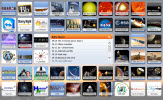July 2018
Mercury continues moving eastward away from the setting Sun and moving toward its greatest eastern elongation on the 12th. Viewing Mercury is best from the southern hemisphere as it is rather low over the western horizon as seen from north of the equator.
Venus continues to dominate the western skies after sunset local time. It has a close conjunction with with the star Regulus in Leo the Lion on the 9th and is also in conjunction with the waxing crescent Moon a few days later on the 15th.
Mars continues moving in retrograde and near the end of the month Mars will be at opposition (27th) and closest to the Earth on the 31st. Mars will also be in conjunction with the totally eclipses Moon on the night of the 27th. The eclipse will be visible from south of the equator.
Dwarf Planet Ceres is over the southwestern horizon at sunset but with an apparent magnitude of nearly 8.0 Ceres is only visible with telescopes or time-exposure images. Watch for Venus to be within about 7-8o from Ceres on the 18th.
Jupiter ends its retrograde motion on the 11th but continues to be very visible in the evening and night skies.
Saturn is now just past its opposition and is still very visible albeit not very high above the southern horizon for observers in the northern hemisphere. Watch for a conjunction with the waxing gibbous Moon on the 24th.
 ---
---
 ---
---













 Above the Solar System at 10 day Intervals
Above the Solar System at 10 day Intervals

 Lee's Summit, MO
Lee's Summit, MO 